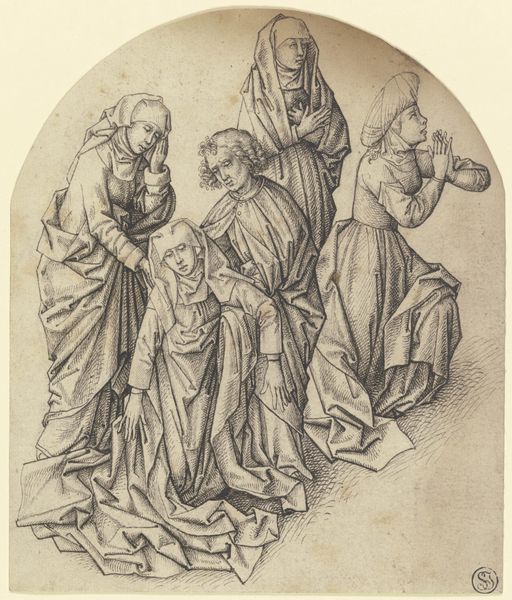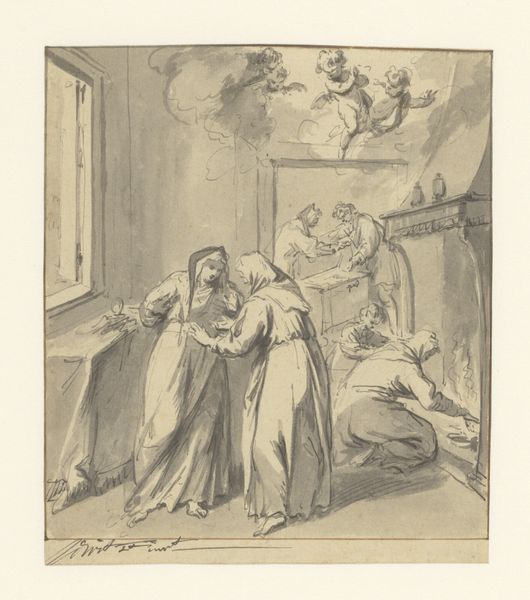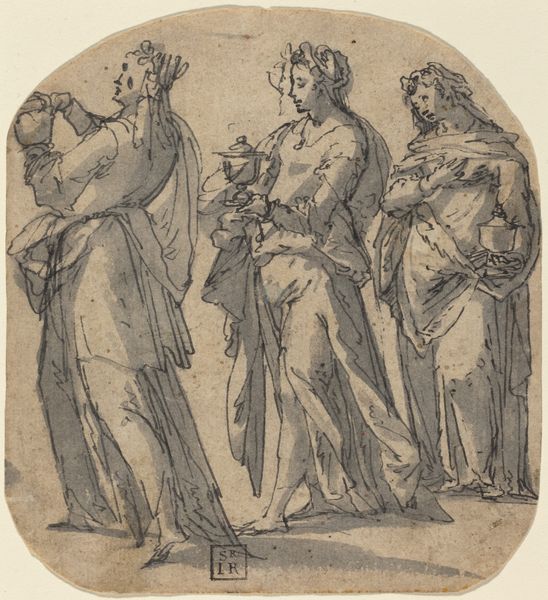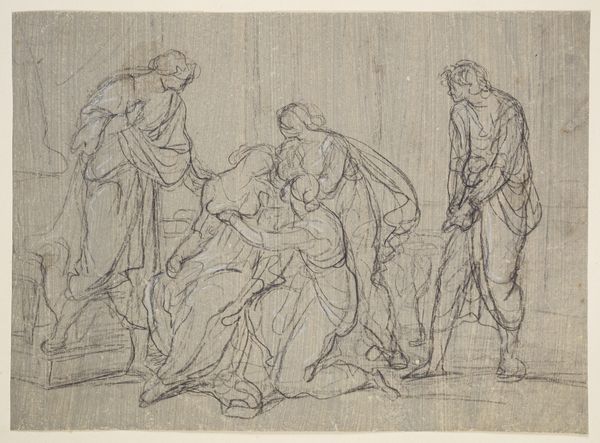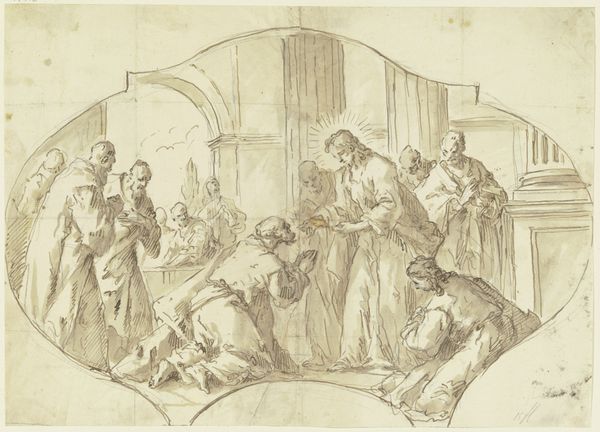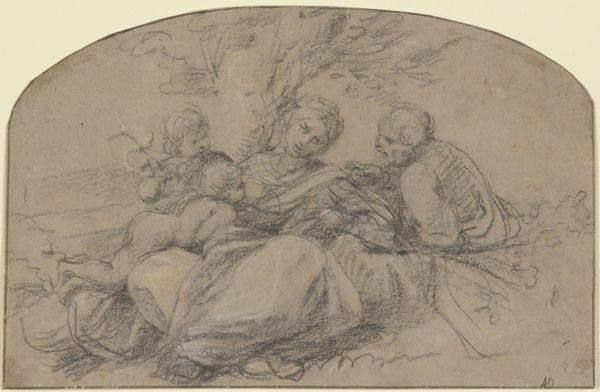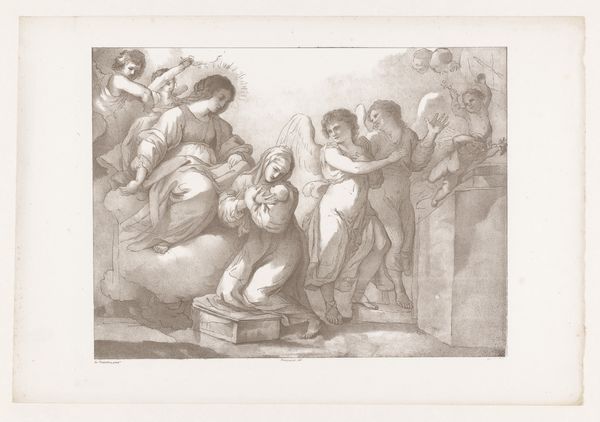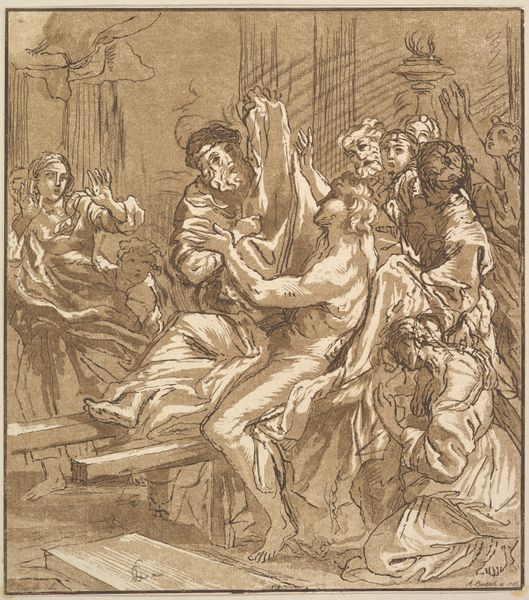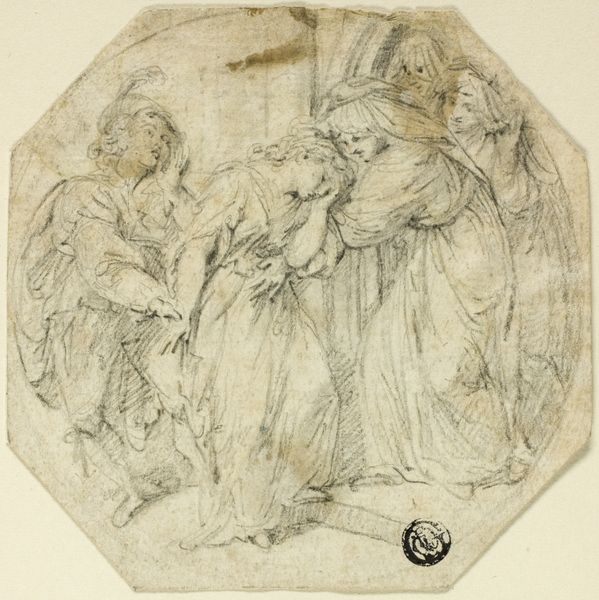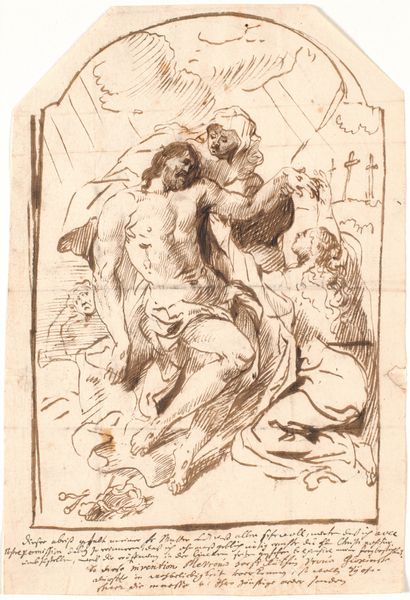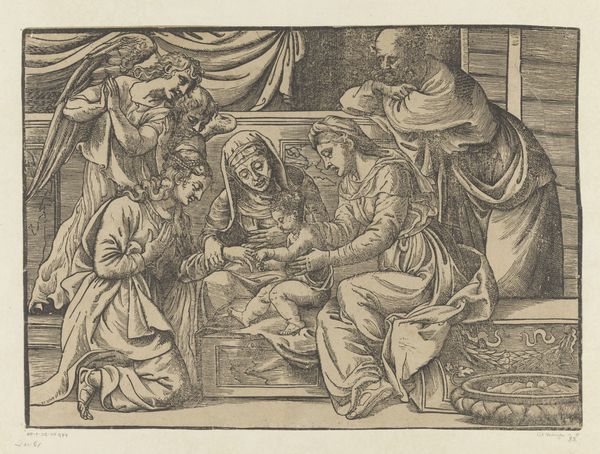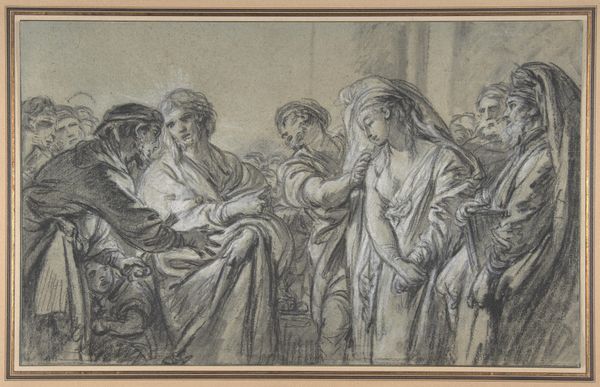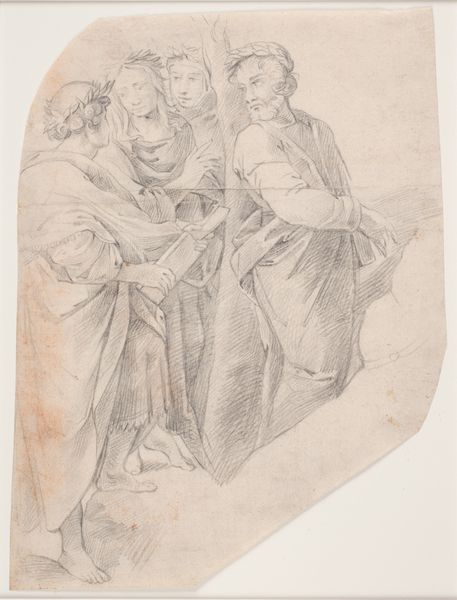
drawing, print, gouache, paper, ink, ink-drawings, pencil, pen
#
drawing
#
narrative-art
# print
#
gouache
#
pencil sketch
#
figuration
#
paper
#
11_renaissance
#
ink
#
ink-drawings
#
pen-ink sketch
#
pencil
#
pen
#
history-painting
Dimensions: 182 × 184 mm
Copyright: Public Domain
Editor: So, this is a piece called "Visitation", from the Renaissance, and it’s at the Art Institute of Chicago. It’s an ink drawing with gouache on paper, and it feels... unfinished? The lines are very gestural. What do you see in it? Curator: I see a testament to the material processes inherent in artistic creation. The use of ink and gouache, the paper itself - these weren’t just neutral surfaces, but active participants in the making of meaning. How would the cost of materials dictate accessibility, and potentially, artistic creation? Editor: That's a really interesting point! It also feels very much like a sketch. Were these the same materials someone would use in a ‘finished’ piece? Curator: That’s key. Think about the labor involved. The drawing itself is a form of labor, dependent on accessible and economic materials. Consider the difference in accessibility when working with gold leaf, or lapis lazuli pigment for the color ultramarine. It is highly probable that cheaper drawing media allowed the artist to express more with fewer resources. What does that tell us about the intended audience or purpose? Editor: Hmmm. Maybe it wasn't meant for a wealthy patron, but perhaps as a preparatory sketch or a more accessible devotional image? That actually shifts my perspective on the "unfinished" quality. It’s not unfinished, just a different kind of product! Curator: Exactly! By looking at the materiality, and thinking of the artist as a worker utilizing those materials, we gain insight into its broader social and economic context. Do you think a highly polished work speaks to a different system of production and consumption? Editor: Absolutely. The materials tell a story of labor, access, and the economics that shape what art is even *possible* to create. Curator: Indeed! The beauty resides in decoding that materiality.
Comments
No comments
Be the first to comment and join the conversation on the ultimate creative platform.
